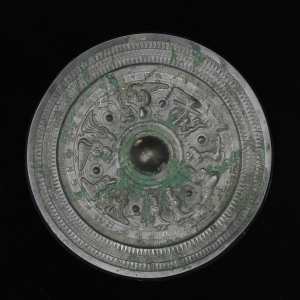Squares and Circles—Exhibition of Bronze Mirrors

Introduction
Squares and Circles—Exhibition of Bronze Mirrors
Bronze mirrors are unique, outstanding, and fabulous among ancient Chinese bronzes. Modern master of Chinese culture Luo Zhenyu ever wrote in his book The catalogue of Ancient Chinese Mirrors, “Ancient Chinese bronze mirrors have exquisite decorations, magnificent and rarely-seen inscriptions, and elegant connotations. It is hard to find these three merits in any other artifact. ” Bronze mirrors are more than that. After the end of the Bronze Age, ding, gui, zun, and other bronze ritual objects gradually disappeared in temples, ancestral shrines, and other special places while bronze mirrors, bronze coins and other small items with expanded production scales were gradually used by ordinary people. Bronze mirrors developed over time. After the prosperity in the Han Dynasty and the first decline in the Wei, Jin, and Southern and Northern Dynasties, bronze mirrors reached its peak of development in the Tang Dynasty, followed by the steady development of the Song,Yuan, Ming and Qing Dynasties, and gradually declined in the mid-and-late Qing Dynasty after the emergence of glass mirrors in the Song, Yuan, Ming and Qing Dynasties. For thousands of years, bronze mirrors have evolved with the times in terms of casting techniques, shapes, ornaments, and inscriptions, and have been upgraded in various ways, which can be considered the only remaining living example with continuous growth among different kinds of bronzes.
Bronze mirrors, as an indispensable utensil in the daily life of the Chinese people, carried many symbolic meanings such as religious beliefs and good wishes, and were frequently shown in poems and songs, legends and other literary works through the ages, such as the widely circulated stories,”a broken mirror made whole again” and “regarding other person as a mirror”, making bronze mirrors irreplaceable literary imagery, and forming a "mirror culture".
The exhibition includes more than 200 bronze mirrors in the Hunan Museum's collection, and each one is exquisite in form and style in its respective era, basically covering the main kinds of mirrors ranging in date from the Warring States Period to the Ming and Qing Dynasties. The exhibition aims to reflect the development of bronze mirrors, reveal the vigorous vitality of bronze mirrors that have lasted for thousands of years, and explore their cultural connotation through the display of the casting techniques, shapes, ornaments, and inscriptions of bronze mirrors in different periods.
Look at the mirror, you will know yourself; learn about the past, you will know the present.For modern people, bronze mirrors are just like square or round windows from which we can glimpse ancient Chinese people’s life, technology, art and aesthetic. Through the world of squares and circles, we can observe the lives of ancient Chinese people and know the vicissitudes of history, and understand transience and eternity in the culture core, which will illuminate us in the present day.
Highlights
- 羽状纹地十五叶五山纹镜

- 透雕钮蟠龙纹镜
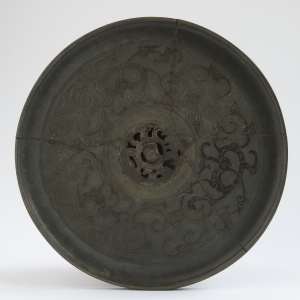
- 龙凤菱纹镜

- “常贵富”蟠螭(pán chī)纹镜
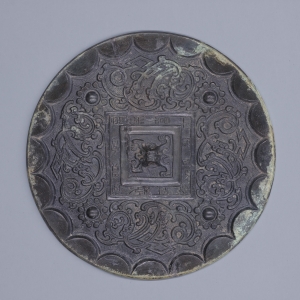
- “所言必当”四乳草叶纹镜
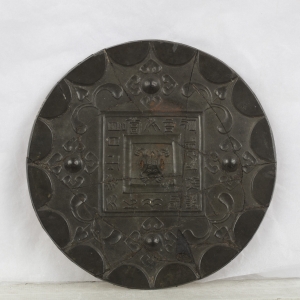
- 星云纹镜
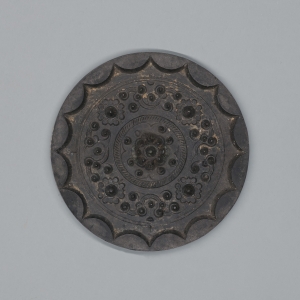
- “昭明”“清白”重圈铭带纹镜
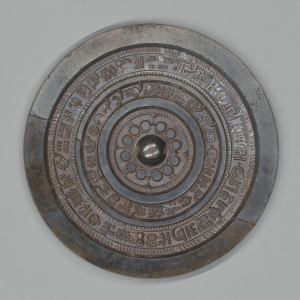
- “长宜子孙”鎏金博局纹镜
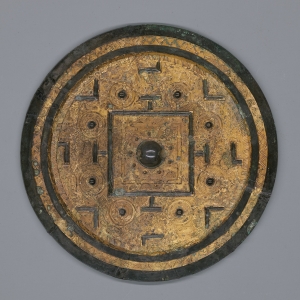
- “新有善同”四神禽兽博局纹镜
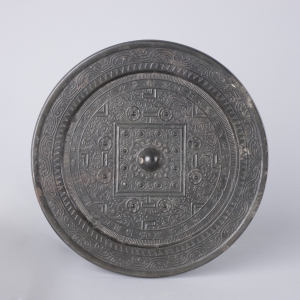
- “李氏”六乳禽兽纹镜
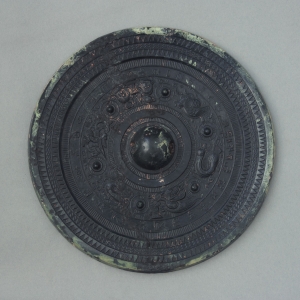
- “尚方”七乳禽兽纹镜

- 东汉(25-220年) 直径19.7厘米,重967克 征集See More
